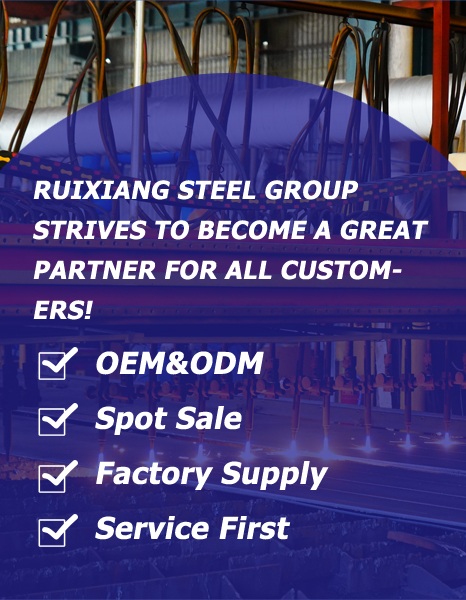Understanding Paint Coating Thickness Standards for PPGI Steel
PPGI (Pre-Painted Galvanized Iron) steel has revolutionized the construction and manufacturing industries with its superior corrosion resistance, aesthetic appeal, and cost-effectiveness. While the galvanized base provides fundamental protection, it's the
paint coating system that determines the final performance and durability. Understanding paint coating thickness standards is essential for selecting the right material for your specific application.
The Structure of PPGI Steel
PPGI consists of a multi-layer composite structure, beginning with a
galvanized steel substrate that provides primary corrosion protection. On top of this substrate, a chemical conversion layer is applied to enhance paint adhesion. Following this, a primer layer creates the foundation for the topcoat, which consists of the final paint layer that delivers color, texture, and additional weather resistance .
The entire system's performance depends on the synergistic relationship between these layers, with the paint coating thickness playing a critical role in determining durability, color retention, and resistance to environmental factors.
Standard Paint Coating Thickness Ranges
Industry standards establish clear guidelines for PPGI paint coating thickness to ensure consistent performance across different applications:
Standard-grade PPGI: Typically features a total paint coating thickness of 20-25μm (microns), with a common distribution being approximately 16μm for the topcoat and 5μm for the back coat .
Premium-grade PPGI: For enhanced durability, premium applications may specify thicker coatings up to 25μm on the front side and up to 25μm on the back side, providing extra protection in demanding environments .
Specialized applications: Specific uses may call for customized thicknesses. For instance, some industrial-grade PPGI can have front coatings ranging from 15-25μm and back coatings from 5-15μm, depending on the exposure conditions and performance requirements .
These thickness ranges represent the optimal balance between protection, cost, and formability, having been established through extensive testing and field performance data.
Factors Influencing Coating Thickness Selection
Environmental Conditions
The operating environment significantly impacts coating thickness requirements. Coastal areas with high salt exposure, industrial zones with chemical pollution, and regions with intense UV radiation typically necessitate thicker coatings to maintain protection throughout the product's service life.
Application Requirements
Different applications impose varying demands on PPGI performance:
Architectural roofing and cladding: Requires coatings that withstand weather exposure while maintaining aesthetic appeal
Appliance manufacturing: Needs coatings that resist scratches, chemicals, and frequent cleaning
Specialized industrial applications: May demand customized thicknesses for unique corrosion resistance or durability needs
Paint Chemistry and Formulation
The type of paint resin significantly influences the required coating thickness:
Polyester (PE): Standard resistance with good flexibility and cost-effectiveness
Silicone Modified Polyester (SMP): Enhanced durability and color retention
High Durability Polyester (HDP): Superior weather resistance for harsh environments
Polyvinylidene Fluoride (PVDF): Exceptional chalk and fade resistance, typically used in premium applications
Each resin type has different protective properties at varying thicknesses, allowing for optimization based on specific project requirements.
Measuring and Verifying Coating Thickness
Accurate measurement of paint coating thickness is essential for quality assurance. Industry-standard methods include:
Digital coating thickness gauges: Non-destructive instruments that use magnetic or eddy current principles to measure dry film thickness
Destructive testing: Cross-sectional analysis under microscopy for precise measurement of individual layers
Ultrasonic testing: Advanced methods for multi-layer coating systems
المصنعين المحترفين مثل مجموعة روشيانغ للصلب تنفيذ بروتوكولات صارمة لمراقبة الجودة، مع القياسات التي تؤخذ في نقاط متعددة عبر عرض وطول الملف لضمان الاتساق.
معايير الصناعة والامتثال لها
تلتزم الجهات المصنعة للدليل بالمعايير الدولية المعمول بها التي تحدد متطلبات الطلاء:
ASTM A653: المواصفات القياسية للصفائح الفولاذية، المغلفة بالزنك بعملية الغمس الساخن
JIS G 3312: المعيار الصناعي الياباني للصفائح الفولاذية المغلفنة مسبقة الطلاء
GB/T 12754 المعيار الوطني الصيني لألواح الصلب المطلية بالألوان
وتوفر هذه المعايير أطرا لتحقيق اتساق الجودة وإمكانية التنبؤ بالأداء في مختلف الشركات المصنعة والمناطق.
العلاقة بين سمك الطلاء والأداء
مقاومة التآكل
يخلق سمك الطلاء الكافي حاجزًا فعالًا ضد الرطوبة والأكسجين والعوامل المسببة للتآكل.وعادة ما توفر الطبقات الأكثر سمكًا حماية أطول، على الرغم من أن العلاقة ليست خطية -فعند تجاوز نقطة معينة، ينتج السمك الإضافي عوائد متناقضة في حين تزيد التكلفة وقد تقلل من المرونة.
التحمل وطول العمر
يؤثر سمك الطلاء المناسب تأثيراً مباشراً على عمر المنتج عن طريق:
مقاومة تدهور الأشعة فوق البنفسجية: وتحتوي الطبقات السميكة على المزيد من الصبغات والراتنجات التي تمتص الأشعة فوق البنفسجية
الحفاظ على الاحتفاظ بالألوان: يمنع سمك الفيلم الكافي التلاشي المبكر والطباشير
الضغط الميكانيكي الثابت: ومن الأفضل للطلاءات السميكة مقاومة الصدمات البسيطة والتآكل أثناء التركيب والخدمة
التشكيل والتصنيع
في حين أن الطبقات السميكة توفر حماية معززة، فإنها يمكن أن تؤثر على قابلية التشكيل.التوازن أمر بالغ الأهمية -قد تتشقق الطبقات السميكة للغاية أثناء عمليات الانحناء أو التشكيل، مما يعرض الحماية للخطر.تقوم الجهات المصنعة في العادة بتحسين سمك الطلاء استنادًا إلى متطلبات التصنيع المقصودة.
اعتبارات التكلفة
يؤثر سمك الطلاء بشكل مباشر على تكاليف المواد، حيث تفرض الطلاءات الأكثر سمكًا أسعارًا أعلى بسبب زيادة استهلاك المواد الخام.ومع ذلك، فإن تحليل تكلفة دورة الحياة يبرر غالبًا التكسية المتميزة للتطبيقات التي تكون الصيانة فيها صعبة أو مكلفة، أو حيث الفشل المبكر سيكون له عواقب كبيرة.
الابتكارات في تكنولوجيا الطلاء
وقد أدت التطورات الأخيرة في تكنولوجيا الطلاء إلى تطورات من قبيل:
الطلاءات ذات المواد الصلبة العالية: توفير أفلام أكثر سمكا في تطبيقات فردية مع خفض انبعاثات المركبات العضوية المتطايرة
طلاءات المعالجة الذاتية: تحتوي على كبسولات صغيرة تصلح الخدوش الصغيرة
نظم الراتنج المتقدمة: يوفر حماية فائقة بسمك غشاء جاف منخفض
تستمر هذه الابتكارات في توسيع إمكانيات الأداء لتطبيقات PPGI مع تحسين متطلبات سمك الطلاء.
الاستنتاج: تحديد سمك الطلاء الصحيح
ويتطلب اختيار السمك المناسب لطلاء الطلاء حسب مؤشر الإنتاج الفلوري العمومي دراسة متأنية لعوامل متعددة، بما في ذلك الظروف البيئية، ومتطلبات التطبيقات، والتوقعات الجمالية، والقيود المفروضة على الميزانية.ومن خلال فهم معايير الصناعة والعلاقة بين السمك والأداء، يستطيع المهندسون المعماريون والمهندسون والمصنعون اتخاذ قرارات مدروسة تعمل على تحسين الاستثمار الأولي والقيمة طويلة الأجل.
وفي مجموعة رويكسيانغ للصلب، يستفيد خبراؤنا الفنيون من عقود من الخبرة لمساعدة العملاء على اختيار المواصفات المثالية لمؤشر الشراكة بين القطاعين العام والعام لمشاريعهم الفريدة.نجمع بين الاختبار الشامل ومراقبة الجودة الصارمة ومعرفة التطبيقات العملية لضمان تقديم منتجاتنا أداءً موثوقًا به عبر التطبيقات والبيئات المتنوعة.
 انقر:25تعديل: Admin
انقر:25تعديل: Admin الوقت:2025-10-04 16:15:06
الوقت:2025-10-04 16:15:06
